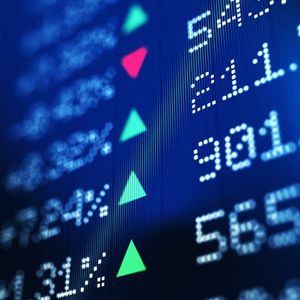Bank of America is pointing global investors toward Australia, predicting that its sovereign bonds are poised to outperform in what it calls a “post-dollar” world. In a research note released Wednesday, FX strategists Oliver Levingston, Adarsh Sinha, and Janice Xue highlighted Australia’s fixed-income market as a likely hotspot for capital inflows amid ongoing global de-dollarization. “De-dollarization was a major theme on our trip to the United States and Canada, and we continue to highlight the significant impact small shifts in global fund managers’ asset allocations could have on the demand profile for AUD fixed income.” The note makes the case that Australia’s relatively small bond market could experience dramatic price swings if global investors keep fleeing U.S. dollar-denominated assets. Investors have been looking for more sound and undervalued alternatives as the greenback has lost its previously unassailable haven status, particularly after almost a year of political and economic tumult under President Donald Trump. Investors dump dollar amid Trump-era volatility The report directly attributes the trend to increasing global discomfort with U.S. financial stewardship. The re-emergence of Donald Trump on the political scene, along with a fresh wave of belligerent trade policies and what the bank calls “economic nationalism,” has only hastened investor diversification . Trump’s declaration of sweeping tariffs earlier this year, which markets dubbed “Liberation Day,” set off a global market selloff. Investors stampeded to pull out of U.S. markets, anxious about protracted uncertainty and trade isolationism. This “Sell America” movement was marked by heavy selling of Wall Street stocks, U.S. Treasurys, and even the dollar itself. The U.S. dollar index (DXY), which measures the greenback against a basket of leading currencies, has slid by about 9% year-to-date in 2025, its most significant decline in over 10 years. Investor conviction in the dollar is non-existent; as Bank of America’s June Global Fund Managers Survey showed, 86% of respondents believe the dollar will devalue in the coming 12 months , a new record low. The report found fund managers with less of a long-dollar bias than at any time in the past 20 years. Almost 20 percent of the 222 managers polled with $587 billion under management said that betting against the dollar was the most “crowded trade” globally. This loss of confidence has paved the way for other currencies, particularly those linked to stable economies rich in raw materials like Australia, to gain the favor of global reserve managers and institutional investors. Central banks boost demand for AUD bonds Now, Australia is feeling the consequences of that change in sentiment. Its 10-year government bond yield is about 4.24%, which is not that different from the U.S. equivalent of 4.43%. But Bank of America sees this gap widening in the years ahead. By late 2026, the bank predicts that Australian bonds will have a 75 basis point spread, which would entail stronger demand and higher prices. The note said that the demand outlook for AUD fixed-income assets appeared strong with support from Australia’s growing superannuation funds and the possibility of bank deregulation. One big reason is the rising demand for “peripheral dollar bloc assets,” consistently stable currencies in faraway lands from American politics, supported by strong local fundamentals. The proportion of official reserves in Australian dollars has doubled in the past ten years. The strategists estimate that a 1-percentage-point lift in global reserve demand would absorb 185% of the net supply of Australian sovereign bonds for the current fiscal year. Australia’s large pension funds have also been moving into the local bond market with increasing vigor. These superannuation funds are internationalizing their balance sheets, and the demand for AUD-denominated assets flows. KEY Difference Wire : the secret tool crypto projects use to get guaranteed media coverage


















